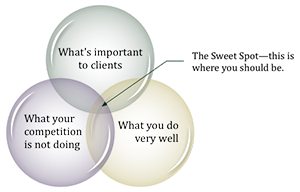
Adopting a new brand shouldn’t make you feel like an ugly stepsister squishing her foot into a tiny glass slipper. Rather, you’re looking for that Cinderella fit, a thoughtful melding of truth and optimism that empowers your company to grow into its deeper self. The shoe fits, but your toes still have room to wiggle.
A few months ago, I wrote a post called Creating Your Brand from the Inside Out: Why Your Culture Comes First, which was later published in the January 2013 issue of Utah Construction & Design. In that piece, I discussed the inextricable relationship between culture and brand.
Your brand should reflect your organization’s unique genetic identity with a spritz of aspiration. You want your company to recognize itself in the mirror, but maybe looking a tad dapperly, so it straightens its posture, brushes the lint off its shoulder, and strides toward the future with vision and confidence.
How do you achieve that magical fit? As a brand development consultant, I would take these five steps to discover and unleash your organization’s brand.
1) Formulate guiding questions to illuminate core issues. Don’t think of these as literal questions posed in a survey or focus group but instead view them as headings in your final report. Some examples include:
- What is your current brand image/reputation among target audiences and stakeholders?
- What positive and negative associations are attached to the organization?
- What are the major brand associations of your competitors?
- How is your company different and better?
- What should you strive to be?
- What tactical brand differentiation and marketing opportunities exist?
2) Thoroughly examine the facts through a qualitative discovery process. Get an honest view of your firm’s reality by conducting a competitive analysis, quantitative data assessment, and communications audit as well as gaining an understanding of the company’s history.
3) Involve all members of the organization. Establishing a transparent, comprehensive process in which every employee feels heard is not only vital for buy-in but also ensures the brand truly reflects the company’s culture. Participants will be more invested in the process and committed to maintaining its outcomes.
4) Develop a distinctive set of “brand tools.” A brand messaging platform will focus and guide marketing and organizational decisions. It includes a positioning statement, key messages, and brand attributes. The positioning statement reflects the institutional DNA and is so unique to the organization that it cannot be applied to any other company. The key messages articulate the firm’s purpose and direction, while brand attributes comprise a list of adjectives that describe the company’s character.
 5) Bring the brand to life. Through a targeted creative process, design a visual identity that captures the company’s personality and develop a marketing strategy that is built around your company’s “sweet spot”—the intersection of what’s important to clients, what you do very well, and what your competition is not doing. Most importantly, help your employees understand and “live” the brand in everything they do—from answering the phone to delivering a presentation to hiring a new associate. The more deeply your brand is interwoven with your culture, the easier that glass slipper will glide on—and stay.
5) Bring the brand to life. Through a targeted creative process, design a visual identity that captures the company’s personality and develop a marketing strategy that is built around your company’s “sweet spot”—the intersection of what’s important to clients, what you do very well, and what your competition is not doing. Most importantly, help your employees understand and “live” the brand in everything they do—from answering the phone to delivering a presentation to hiring a new associate. The more deeply your brand is interwoven with your culture, the easier that glass slipper will glide on—and stay.
Are you ready to uncover your unique brand? Contact me at 541.601.0114 or chris@capiche.us to find out how Capiche can help your organization crack its genetic code and chart its course for future success.




